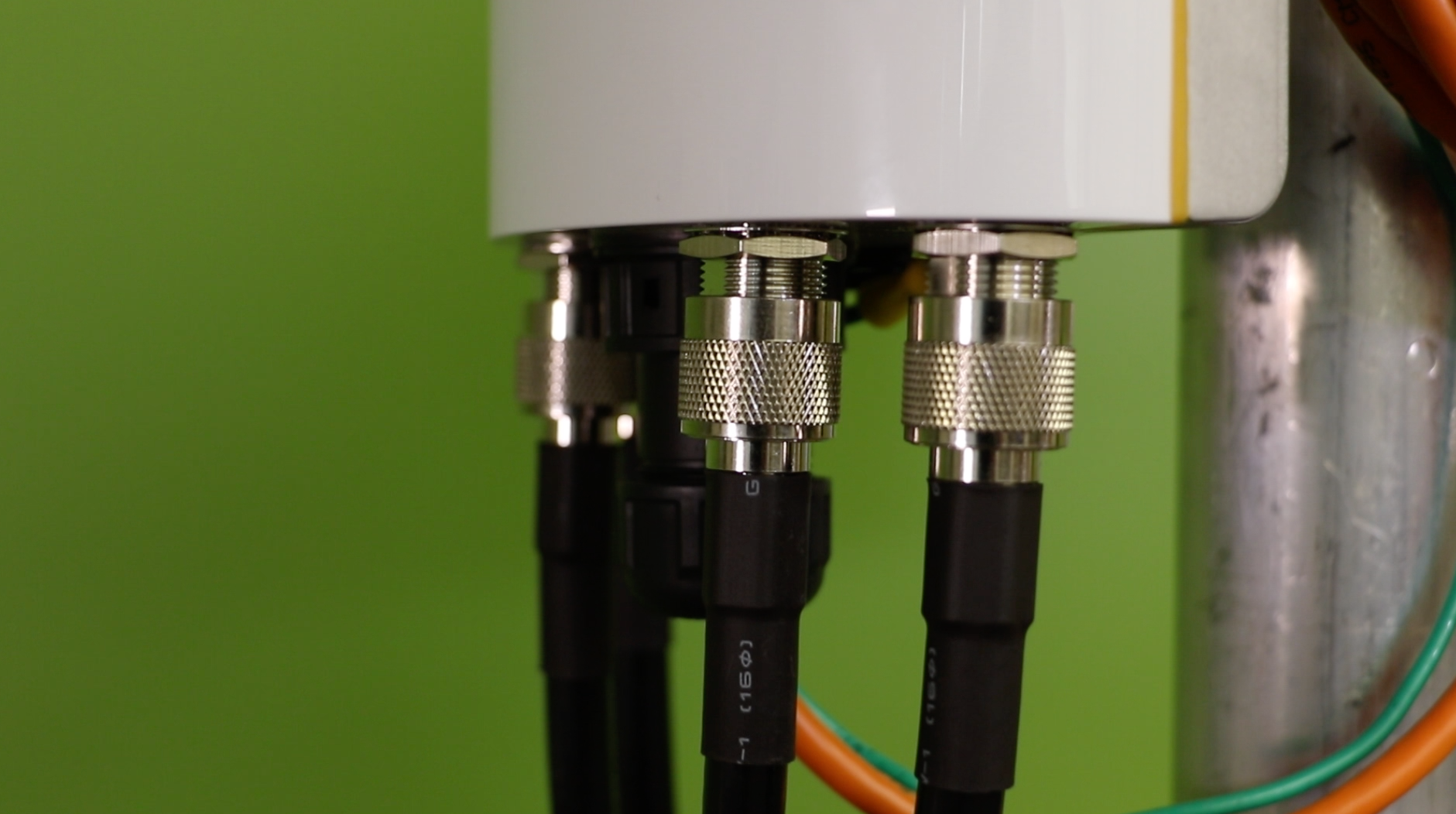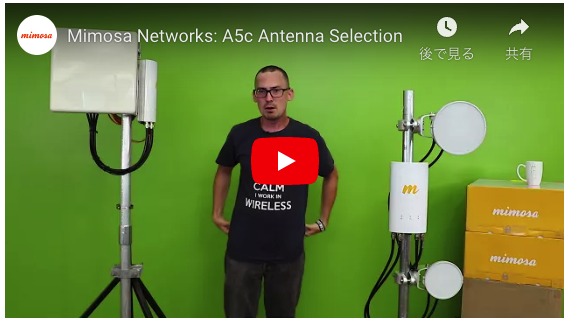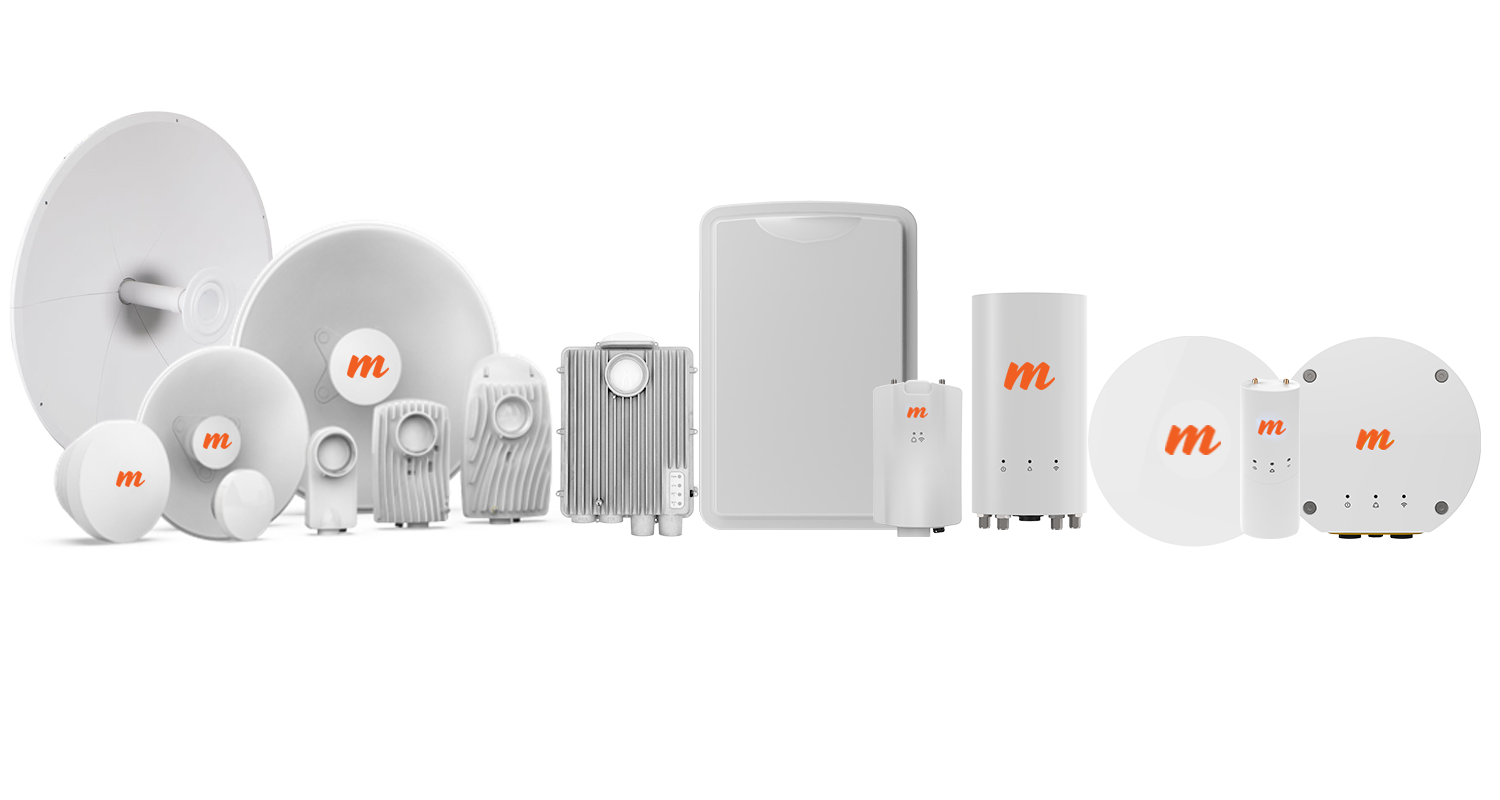Delivering fiber-like speeds with Mimosa's point-to-point and point-to-multipoint solutions.
Antenna Selections for the Mimosa A5c
At Mimosa, we get a lot of questions from service providers asking about which antenna we recommend to provide the best performance in a given situation. This blog is designed to help answer these questions—specifically for our A5c product.
The Mimosa A5c has four N-ports since it’s a 4x4 MIMO radio. Because of this, you can set up your towers in many different configurations, with many different antenna choices. There are many antenna manufacturers out there, but there are three that we’ve worked with quite closely, and who we recommend our customers use.
You may notice that the A5 supports 4x4, but the C5 supports 2x2. We use the extra chains on the A5 to send twice as much energy in the same direction, and to apply beamforming so the received power is optimized at each C5. It works the same in the reverse direction, where the receive antenna gain is 3 dB better than what a 2x2 array would give you.
High Noise/Dense Coverage
RF Elements sells its popular horn products. These horns are used for high-noise environments, because the pattern drops off really quickly when you get outside the main beam. With a horn design, the antenna gain is generally lower than a traditional sector antenna, and the beam pattern is round instead of a fan beam. What they give in exchange, though, is excellent side lobe rejection. RFE has horns ranging from 30 degrees all the way up to 90 degrees, and the gain goes down as the pattern becomes wider. These are two port antennas though, so you would need two horns to take advantage of the full A5c output.
I would use this in a situation where you have a dense concentration of clients/potential clients and have a very noisy environment. A potential setup could look like the following:
A5c #1 has two 30-degree RF horns for a total of 60 degree coverage, but you would miss out on the extra gain and beamforming if they are not pointed in the same direction so that the antenna patterns overlap.
Low Noise/Longer Range
KP Performance and MTI also sell popular sector antenna products. Both companies have a sector antenna specifically designed for the Mimosa A5c. The antenna has four ports that match up to the four on the A5c. This antenna is a 65 degree sector that takes advantage of the +3 dBi of beamforming gain.
I would use this in a situation where you have longer range clients in a dense concentration of clients/potential clients, but in a less noisy environment. A potential setup could look like the following:
A5c #1 has a KP 4-port antenna attached for 65 degrees of coverage. If you wanted a full 360 degrees of coverage, you would need to use 6 A5c radios and 6 antennas with three sets of channels. Antennas that are back-to-back can share the same channel.
Antenna Gain
I want to talk a bit about antenna gain here. A lot of folks want to buy the highest gain sector they can find, and in general, the sector panels with the highest gain have 16 antenna elements per array, versus 8 antenna elements in the products we recommend. In cases where the terrain is super flat, you’ll be able to get these to work well, provided you spend time carefully adjusting the elevation angle. In most sector applications, however, the elevation beam-width of the 16-element panels is too narrow, and you end up not being able to fit all the clients within the main fan-beam. So what looks like 3 dB better gain on the data sheet turns out to be 3 dB worse gain in practice, and you have unhappy customers as a result. When in doubt, give us a shout and we can talk through the best choice of antennas, between horns and various sectors.

Cables
We’re also seeing cabling related problems out there. If you’re shopping for the lowest cost N-to-N jumper cables, there are several Chinese vendors selling RG58 cable with N-connectors on both ends. Please avoid these cables, as the thin and cheap cables are not designed to operate at 5 GHz. For example, a two meter jumper built with RG58 cable will have a loss of 2.5 dB. To avoid performance issues in the field, please use LMR400 wherever possible. If you have to use something thinner, LMR240 is fine, though a bit more lossy. Another thing: Please don’t use cable runs of more than two meters, because even with LMR400, the losses start becoming significant.
Antenna Selections for the Mimosa C5c
The Mimosa C5c has two RP-SMA ports since it’s a 2x2 MIMO radio. The C5c can be used either as a backhaul solution or a client radio in a PTMP solution. Because the C5c is a 5 GHz radio, any 5 GHz dual pol antenna will work on the C5c. The C5c will also work from 4.9 GHz to 6.4 GHz with restrictions based on your regulatory domain and any license that may be required in your area.
There are many brands available out there, but unfortunately, they are not all created equal.
Today, I’m going to focus on just a few different antenna brands. Mimosa and some of our customers have tested many different antennas, but I wanted to highlight and recommend just a few:
- KP Performance dual pol feed horn antenna: This antenna seems to be a very strong performer when using C5c.
- RF Elements: They have a really nice, small antenna (Ultra Dish) coming soon for C5c PTMP solutions and short range PTP solutions.
- MTI client panel antenna: We have tested a 24 dBi client panel antenna from MTI. It’s small and compact so it doesn’t stick out on a customer’s roof.
- Arc Wireless dual pol antenna: This antenna is an affordable solution that works very well in the PTP environment. We are actually using an Arc Wireless antenna for our 56 mile diversity shot.
RF Elements horns can be found at http://www.rfelements.com
KP Performance antennas can be found at http://www.kpperformance.ca
MTI antennas can be found at: http://www.mtiwe.com
Arc Wireless antennas can be found at many resellers and distributors like http://www.streakwave.com

